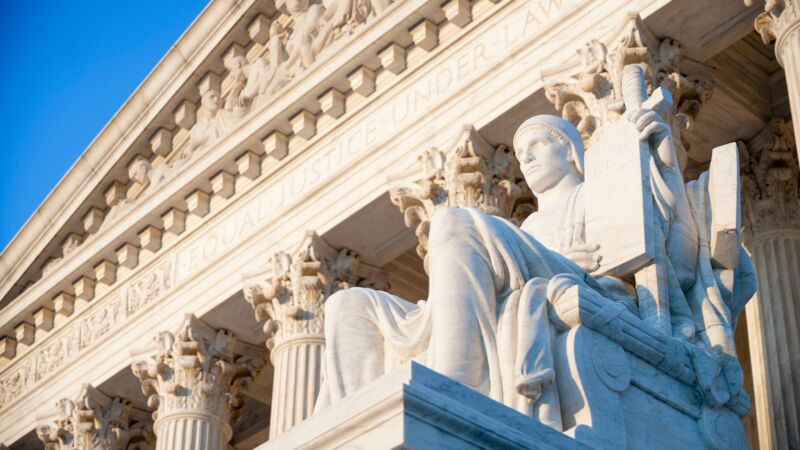In a landmark decision, the Supreme Court overturned the longstanding Chevron doctrine, significantly altering the landscape of federal agency authority. The ruling, known as the Loper decision, marks a seismic shift in how federal agencies interpret and enforce statutes.
Checkpoint Payroll Update recently spoke with Alexander T. MacDonald, Shareholder and member of the Workplace Policy Institute at Littler, to understand how the Loper decision may affect federal labor and employment law.
The Chevron doctrine
For decades, federal agencies have relied on the Chevron deference principle to interpret statutes they were tasked with implementing. MacDonald explained that this doctrine, established in the 1984 case Chevron U.S.A., Inc. v. Natural Resources Defense Council, Inc., allowed courts to defer to an agency’s interpretation of a statute if the statute was ambiguous and the agency’s interpretation was reasonable.
Federal agencies and Chevron deference
Major federal agencies such as the National Labor Relations Board (NLRB), Department of Labor (DOL), Occupational Safety and Health Administration (OSHA), and Equal Employment Opportunity Commission (EEOC) have utilized Chevron deference. This principle provided these agencies with considerable latitude in interpreting and enforcing labor and employment laws, significantly influencing workplace regulations and employer-employee relations.
“Basically, every labor and employment agency at the federal level has relied on judicial deference, quasi Chevron deference, to some degree,” MacDonald began. He specified that some agencies, such as the National Labor Relations Board (NLRB), have their own deference principle (NLRB v. Hearst Publications), however, the fundamental principles remain the same. “Congress assigned responsibility to the agency,” MacDonald added.
The Loper ruling: a new era of statutory interpretation
The Supreme Court’s Loper ruling explicitly rejects the Chevron deference doctrine, ushering in a new approach to statutory interpretation. MacDonald explained that the Supreme Court emphasized that the primary role of federal judges is to interpret statutes when resolving disputes between parties and those duties would not be fulfilled if they defer to agency interpretations instead of independently interpreting the law.
“[The Supreme Court] comes out and says explicitly that…we’re done with this nonsense about the statute might mean one thing or another,” MacDonald said. “The statute means something in every case – there is a best reading,” he stressed.
Key points of the Loper ruling include:
- Rejection of agency deference: The Court determined that judges should no longer defer to agency interpretations of statutes. Instead, judges are now tasked with identifying and applying the “best reading” of a statute, independent of agency interpretations.
- Emphasis on judicial interpretation: The ruling stresses that there is always a “best reading” of a statute, which judges must determine without automatically favoring the agency’s interpretation. This shift places greater responsibility on the judiciary to interpret statutes directly.
- Implications for federal agencies: As a result of this ruling, federal employment agencies will face increased challenges in defending their interpretations and regulations in court. They will no longer benefit from the presumption of deference, potentially leading to more rigorous scrutiny of agency rules and decisions.
Challenges to existing regulations
The Loper ruling opened the door for challenges to various federal regulations. Some of the rules that are already under scrutiny include:
- Regulations under the Davis Bacon Act,
- Rules defining independent contractors versus employees under the Fair Labor Standards Act (FLSA),
- Regulations modifying minimum salary requirements for certain exemptions,
- Rules implementing the Pregnancy Accommodation Act,
- OSHA regulations allowing non-employee representatives in safety investigations, and
- NLRB rules defining joint employer status.
“So in all of these cases, this is going to come up,” MacDonald stated. “The court has to decide in every case whether the agency’s interpretation…is an interpretation of the statute.” He specified that such interpretations would include a regulation or rule, like the DOL’s independent contractor or overtime rules.
A new playing field for legal challenges
Under the new framework established by the Loper ruling, challengers to agency rules now have a more level playing field. Agencies must demonstrate that their interpretation is the best reading of the statute, rather than simply a reasonable one.
MacDonald noted that the Loper ruling gives challengers a better chance of success in their cases, but does not automatically favor challengers or result in agencies losing every case. “[T]he agency starts from the same place that the challengers do [and] it has to do the work to show that as a matter of first principles, the best way to read this statute is the way the agency has spelled it out in its regulation,” he said.
MacDonald added that the Supreme Court decision in Loper explicitly stated that it would not overturn cases previously decided under the Chevron doctrine. “It was going to respect those decisions as just a matter of stare decisis precedent,” he said.
Implications for employers and compliance
The Loper ruling may introduce uncertainty into the regulatory landscape, potentially impacting employer compliance with federal labor and employment laws. As the courts begin to apply this new standard, employers may face a period of ambiguity regarding their compliance obligations.
MacDonald noted that although there will be no immediate changes from the Supreme Court’s decision, he did advise following any developments, “particularly with some of these new regulations, like the overtime regulation, etc.” “Watch them closely, because what happens in court could affect your compliance obligations,” he added.
The ruling has no effect on state law
The scope of the Supreme Court’s decision and the resulting new standard only applies to federal agencies and federal courts. State labor and employment agencies retain their previous level of authority, which means that state-specific interpretations and practices remain intact.
“So if your state has an overtime regulation, a workplace safety or workplace health regulation or pay regulation, none of that’s affected by this,” MacDonald said.
However, he explained that while there’s no direct effect on state law, there’s a possibility that state courts might voluntarily adopt similar principles in the future. This could occur if a state court decides to align its interpretation of state law with the federal approach. “That hasn’t happened yet, but that could happen,” MacDonald concluded.








